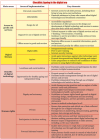Cultural adaptation to aging: a study on digital cultural adaptation needs of Chinese older adults based on KANO model
- PMID: 40241970
- PMCID: PMC11999966
- DOI: 10.3389/fpubh.2025.1554552
Cultural adaptation to aging: a study on digital cultural adaptation needs of Chinese older adults based on KANO model
Abstract
Introduction: With the rapid advancement of digitalization and an aging population, China faces unprecedented challenges in older adults' digital cultural adaptation. The "54th Statistical Report on China's Internet Development" reveals that individuals aged 60 and above constitute 14.3% of total internet users. However, significant barriers persist in their digital participation, necessitating a deeper understanding of their adaptation process and needs.
Methods: This study employs the KANO model to assess older adults' digital cultural adaptation. A total of 205 respondents participated in a questionnaire survey, with data analyzed using the highest frequency method and the Better-Worse coefficient. The study categorizes digital cultural needs into three dimensions: must-be requirements, one-dimensional requirements, and attractive requirements.
Results: The findings indicate that: 1. Older adults' digital cultural needs comprise must-be requirements (basic functional design, 47.8%), one-dimensional requirements (social participation, 36.1%), and attractive requirements (innovative experiences, 66.8%). 2. Intergenerational cultural cognitive differences, digital skill levels, and the urban-rural digital divide significantly impact their adaptation process. 3. While respondents positively evaluate digital life satisfaction, personal adaptation, and digital content diversity, they express dissatisfaction and expectations regarding family guidance, age-friendly digital services, and the role of digital content in improving life quality.
Discussion: The results highlight the need for targeted strategies in technical support, content design, and service provision to enhance older adults' digital cultural adaptation. Addressing group-specific needs and preferences through coordinated measures can improve digital inclusion, foster intergenerational cultural integration, and optimize digital cultural service systems. This study offers valuable theoretical insights and practical implications for advancing policies and initiatives that support older adults in the digital era.
Keywords: KANO model; age-friendly; cultural adaptation to aging; digital cultural adaptation; digital divide; older adult group.
Copyright © 2025 Li, Yunus, Hussain and Lin.
Conflict of interest statement
The authors declare that the research was conducted in the absence of any commercial or financial relationships that could be construed as a potential conflict of interest.
Figures





References
-
- United Nations Department of Economic and Social Affairs, P. D . World population prospects 2022: summary of results. United Nations. (2022). Available online at: https://www.un.org/development/desa/pd/sites/www.un.org.development.desa...
-
- China Internet Network Information Center . The 54th statistical report on internet development in China. (2024). Available online at: https://www.cnnic.cn/NMediaFile/2024/0911/MAIN1726017626560DHICKVFSM6.pdf
-
- Bin W. Performance, causes, and new paths for governance of digital disability in the elderly from the perspective of digital dividend. J Yunnan Minzu Univ. (2024) 41:60–7. doi: 10.13727/j.cnki.53-1191/c.20240305.006 - DOI
-
- Yang B, Jin D. The digital divide in elderly: manifestations, motivation exploration, and bridging pathways. Acad J Zhongzhou. (2021) 43:74–80.
-
- Mohan R, Saleem F, Voderhobli K, Sheikh-Akbari A. Ensuring sustainable digital inclusion among the elderly: a comprehensive analysis. Sustainability. (2024) 16:7485. doi: 10.3390/su16177485 - DOI
MeSH terms
Supplementary concepts
LinkOut - more resources
Full Text Sources
Medical

